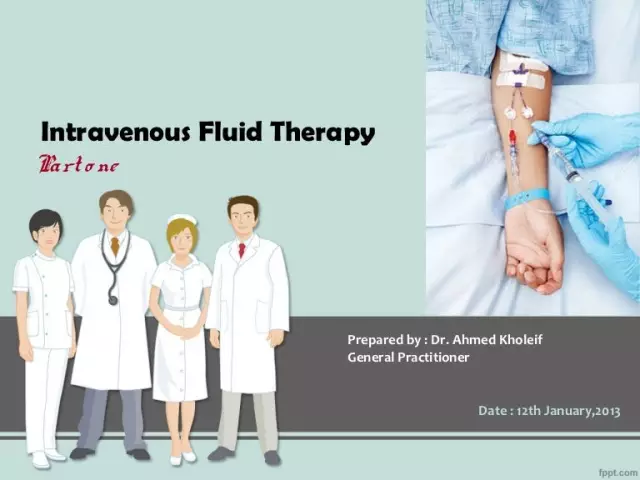- Author Rachel Wainwright [email protected].
- Public 2023-12-15 07:39.
- Last modified 2025-11-02 20:14.
Azaran
Instructions for use:
- 1. Release form and composition
- 2. Indications for use
- 3. Contraindications
- 4. Method of application and dosage
- 5. Side effects
- 6. Special instructions
- 7. Drug interactions
- 8. Analogs
- 9. Terms and conditions of storage
- 10. Terms of dispensing from pharmacies

Azaran is a broad-spectrum antibiotic of the cephalosporin group (III generation) intended for parenteral administration.
Release form and composition
The dosage form of Azaran is a powder for the preparation of a solution for intravenous and intramuscular administration: a powdery mass from white with a yellowish tinge to white (1.0 g each in colorless glass vials, sealed with a combined plastic, rubber and metal lid, with the function of controlling the first opening; 1, 10 or 50 vials in a cardboard box).
1 bottle contains the active substance: sodium ceftriaxone (in terms of ceftriaxone) - 1.0 g.
Indications for use
Azaran is used to treat the following infectious and inflammatory diseases caused by microorganisms sensitive to ceftriaxone:
- Respiratory tract (upper and lower) infections, including pneumonia, lung abscess, pleural empyema;
- Bone and joint infections;
- Skin and soft tissue infections;
- Urinary tract infections, including pyelonephritis;
- Pelvic infections
- Inflammations of the gastrointestinal (GI) tract and bile ducts, including cholangitis and gallbladder empyema;
- Bacterial meningitis;
- Bacterial endocarditis;
- Peritonitis;
- Sepsis;
- Lyme disease;
- Salmonellosis;
- Acute uncomplicated gonorrhea;
- Shigellosis.
Also, the drug is used in postoperative practice for the prevention and treatment of infectious complications.
Contraindications
Absolute:
- Hypersensitivity to other penicillins, cephalosporins, and carbapenems;
- Hypersensitivity to the components of Azaran.
Relative (the drug is used with caution, due to the increased risk of side effects):
- Dysfunction of the liver and / or kidneys;
- Hyperbilirubinemia in newborns, especially premature infants;
- Ulcerative colitis (UC);
- Enteritis or colitis associated with antibiotic use.
Since ceftriaxone crosses the placenta, during pregnancy, Azaran therapy is possible only according to indications, if the expected benefit to the mother exceeds the potential risk to the fetus.
If it is necessary to use the drug during lactation, it is necessary to resolve the issue of interrupting breastfeeding, because ceftriaxone is excreted in breast milk.
Method of administration and dosage
The solution obtained from the powder is administered intramuscularly (i / m), or intravenously (i / v) jet or drip, 1 time per day, if there are no other appointments.
Recommended average daily dose:
- Newborns and children up to 14 days old - 20-50 mg / kg, up to a maximum of 50 mg / kg;
- Children from 15 days to 12 years old - 20-80 mg / kg;
- Children from 12 years old and adults - 1000-2000 mg, up to a maximum of 4000 mg.
For children under 12 years of age weighing ≥50 kg, adult doses are used.
A solution in a daily dose of 50 mg / kg or more is administered by infusion over half an hour.
The duration of the course of therapy is usually no more than 10 days. After removing the symptoms of the disease and normalizing the temperature, the drug should be continued for another 2-3 days.
Recommended dosage in special cases:
- Prevention of infections in the postoperative period: 1000-2000 mg 30-90 minutes before the start of the operation, once (the dose depends on the degree of infectious risk); during operations on the colon and rectum, it is recommended to additionally administer a drug from the 5-nitroimidazole group;
- Bacterial meningitis in infants and young children: 100 mg / kg once a day, up to a maximum of 4000 mg; the duration of the course depends on the pathogen and can be from 4 days (meningitis caused by Neisseria meningitidis) to 10-14 days (meningitis caused by sensitive strains of Enterobacteriaceae);
- Acute uncomplicated gonorrhea: 250 mg IM once;
- Lyme disease: 50 mg / kg once a day (adults and children), up to a maximum of 2000 mg; course duration - 14 days.
Dose adjustment is required in severe renal failure with creatinine clearance (CC) ≤10 ml / min, while the daily dose of ceftriaxone should not exceed 2000 mg.
There is no need to adjust the dose of ceftriaxone in patients with: moderate renal impairment with normal liver function; with impaired liver function with normally functioning kidneys.
With a combination of renal and hepatic failure, regular monitoring of the concentration of ceftriaxone in plasma is carried out, and, if indicated, its dose is adjusted.
After dialysis, patients do not need additional administration of the drug, since the procedure does not facilitate the removal of ceftriaxone. But hemodialysis can change the rate of its elimination, so it is important to control the concentration of the drug in the blood plasma for possible dose adjustment.
A solution for intramuscular administration can be prepared in one of two recommended ways:
- Dissolve 1000 mg of ceftriaxone in 3.6 ml of water for injection, 1 ml of the resulting solution contains ~ 250 mg of ceftriaxone, if necessary, you can use a less concentrated solution;
- Dissolve 1000 mg of ceftriaxone in 3.5 ml of a 1% solution of lidocaine chloride for deep injection into rather large muscles (gluteus or thigh muscle), but not more than 1000 mg in one muscle; lidocaine chloride solution cannot be administered intravenously.
A solution for intravenous administration is prepared as follows:
- Injections: Dissolve 1000 mg of the drug in 9.6 ml of sterile water for injection, 1 ml of the resulting solution contains ~ 100 mg of ceftriaxone; the solution should be administered intravenously slowly over 2-4 minutes;
- Infusion: 2000 mg of powder is dissolved in 40 ml of one of the following solutions that do not contain calcium - 0.9% sodium chloride solution; 0.45% sodium chloride solution with 2.5% dextrose solution; 6% dextran solution in 5% dextrose solution; 5% or 10% dextrose solution; 6-10% solution of hydroxyethylated starch; the duration of intravenous infusion should be at least half an hour.
Freshly prepared solutions from Azaran powder are stable at room temperature for 6 hours and no more than 24 hours at a temperature of 2-8 ° C (storage in a refrigerator).
Side effects
- Central nervous system (CNS): dizziness, headache;
- Urinary system: impaired renal function (increased blood urea, azotemia, hypercreatininemia, cylindruria, hematuria, glucosuria, oliguria, anuria);
- Digestive system: abdominal pain, taste disturbance, nausea, vomiting, dysbiosis, flatulence, glossitis, stomatitis, constipation or diarrhea, pseudocholelithiasis ("sludge" -syndrome), pseudomembranous enterocolitis, increased activity of hepatic transaminases and alkaline phosphatase, cholestatic jaundice;
- Hematopoietic system: leukopenia, anemia, leukocytosis, neutropenia, lymphopenia, granulocytopenia, thrombocytosis, thrombocytopenia, hemolytic anemia, basophilia;
- The blood coagulation system: a decrease in plasma coagulation factors (namely, II, VII, IX, X), hypocoagulation, an increase in prothrombin time, nosebleeds;
- Hypersensitivity reactions: anaphylactic shock, rash, pruritus, urticaria, chills, fever; rarely - edema, eosinophilia, bronchospasm, exudative erythema multiforme (including malignant exudative erythema or Stevens-Johnson syndrome), serum sickness;
- Local reactions: intravenous injection - soreness along the vein, phlebitis; i / m introduction - pain at the injection site;
- Others: superinfections, including candidiasis.
special instructions
Azaran is used exclusively in a hospital setting!
In the case of prolonged therapy, regular monitoring of the peripheral blood picture, as well as indicators of the functional state of the kidneys and liver, should be carried out.
Occasionally, during ultrasound examination (ultrasound) of the gallbladder, darkening is visible, which disappear on their own after discontinuation of the drug (even if this phenomenon is accompanied by pain in the right hypochondrium, it is recommended to carry out symptomatic treatment and continue using the antibiotic).
You can not use ethanol during therapy with Azaran, since there is a possibility of the following disulfiram-like reactions: nausea, vomiting, flushing of the face, spastic pain in the epigastric region, headache, lowering blood pressure (BP), shortness of breath, tachycardia.
Elderly and debilitated patients may need vitamin K in combination with ceftriaxone.
Before using Azaran (like other cephalosporins), a detailed history is taken, but, despite its results, the possibility of anaphylactic shock cannot be ruled out. The condition requires immediate treatment: first, intravenous epinephrine, and then glucocorticosteroids.
According to in vitro studies, it has been revealed that ceftriaxone (like other cephalosporins) is able to displace serum bilirubin associated with albumin. As a result, in newborns with hyperbilirubinemia, especially premature infants, ceftriaxone should be used with even greater caution.
Drug interactions
- Aminoglycosides - act synergistically with ceftriaxone against many gram-negative bacteria (including Pseudomonas aeruginosa), they must be administered separately at the recommended doses;
- Drugs that reduce platelet aggregation (non-steroidal anti-inflammatory drugs, sulfinpyrazone, salicylates) - ceftriaxone suppresses the intestinal flora, interfering with the synthesis of vitamin K, thereby increasing the risk of bleeding;
- Anticoagulants - their anticoagulant effect is enhanced;
- "Loop" diuretics and other nephrotoxic drugs - the risk of their nephrotoxic effect increases;
- Ethanol - Azaran is incompatible with products containing alcohol;
- Solutions containing other antibiotics (including aminoglycosides and vancomycin) and solutions containing fluconazole are pharmaceutically incompatible with Azaran;
- Solutions containing calcium (including Ringer's solution) should not be mixed with ceftriaxone.
Analogs
Azaran's analogs are: Rocefin, Cefaxone, Ceftriaxone, Ceftriaxone Kabi.
Terms and conditions of storage
Store in a dark place at a temperature of 15-25 ° C. Keep out of the reach of children.
The shelf life is 3 years.
Terms of dispensing from pharmacies
Dispensed by prescription.
Information about the drug is generalized, provided for informational purposes only and does not replace the official instructions. Self-medication is hazardous to health!






